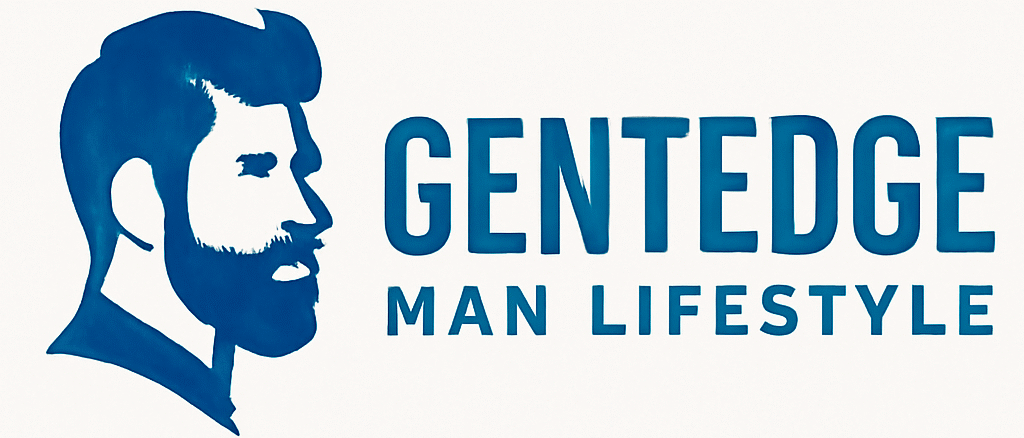A well-groomed short beard can transform your entire look and boost your confidence in ways you never imagined. We’ve seen countless men struggle with finding the perfect balance between rugged masculinity and professional polish – and that’s exactly where short beard styles shine.
Whether you’re dealing with patchy growth or simply prefer a more refined appearance, short beards offer the ideal solution. They’re easier to maintain than full beards yet still provide that distinguished edge that clean-shaven faces often lack. From the classic stubble to the perfectly sculpted corporate beard, we’ll show you how to choose and style the perfect short beard for your face shape and lifestyle.
The best part? These styles work for virtually every occasion – from boardroom meetings to weekend adventures. Let’s jump into the industry of short beard mastery and discover which style will become your signature look.
The Classic 5 O’Clock Shadow
The classic 5 o’clock shadow represents the most effortless and universally flattering short beard style that works for virtually every face shape. This timeless look bridges the gap between clean shaven and fully bearded while maintaining a sophisticated edge.
Achieving the Perfect Stubble Length
Trimming your stubble to 1-3mm creates the ideal 5 o’clock shadow length that appears natural yet intentional. We recommend using a quality beard trimmer with adjustable guards to maintain precise control over your stubble length.
Starting with a slightly longer setting helps prevent accidentally cutting too much hair during your initial trim. Most men find that 2mm provides the perfect balance between visible coverage and refined appearance.
Testing different lengths on small sections first allows you to determine which measurement suits your hair density and growth pattern. Dense hair typically looks best at 1-2mm while sparse growth benefits from the fuller 3mm setting.
Trimming every 2-3 days maintains the consistent stubble appearance without letting growth progress into scruffy territory. Regular maintenance prevents uneven patches and keeps the shadow looking intentionally styled.
Maintenance Tips for Consistent Growth
Washing your face daily with a gentle cleanser removes dead skin cells and promotes healthy hair follicle function. Clean skin provides the optimal foundation for even stubble growth patterns.
Moisturizing the skin beneath your stubble prevents irritation and reduces ingrown hairs that can disrupt the uniform appearance. We suggest using fragrance free moisturizers to avoid skin sensitivity issues.
Exfoliating twice weekly with a mild scrub eliminates buildup that can clog pores and inhibit proper hair growth. This practice ensures your 5 o’clock shadow grows evenly across all areas of your face.
Avoiding aggressive shaving techniques protects hair follicles from damage that could result in patchy regrowth. Gentle trimming preserves the natural growth cycle while maintaining your desired stubble length.
Eating a balanced diet rich in protein and vitamins supports healthy hair growth from within. Proper nutrition directly impacts the thickness and consistency of your facial hair development.
The Well-Groomed Goatee

A well-groomed goatee transforms your facial hair into a sharp statement piece that commands attention. This timeless style offers the perfect balance between rugged masculinity and refined sophistication.
Shaping Your Goatee for Face Structure
Round faces benefit significantly from a goatee’s elongating effect, which creates the illusion of a more defined jawline and adds vertical length to your overall appearance. The strategic placement of facial hair draws the eye downward, making your face appear less circular.
Oval faces work beautifully with most goatee variations since this face shape already has balanced proportions. We recommend emphasizing your natural facial features with a well-defined goatee that complements your existing bone structure.
Square faces can use a goatee to soften harsh angles and create a more balanced look. The focused hair growth around the chin area helps break up the strong horizontal lines of a square jawline, while a short boxed beard can enhance these features if you prefer a more defined appearance.
Trimming Techniques for Clean Lines
Start with a quality beard trimmer to establish an even length throughout your goatee area. Set your trimmer to maintain consistency and work in small sections to avoid removing too much hair at once.
Define your neckline by creating a clean edge between your beard and neck area. This crucial step prevents your goatee from looking unkempt and ensures a professional appearance.
Shape your cheek line using a razor or precision trimmer to create sharp boundaries around your goatee. Clean lines make the difference between a deliberate style choice and accidental facial hair growth.
Maintain your goatee regularly through consistent trimming sessions to keep it looking neat and well-groomed. Regular maintenance prevents your facial hair from growing beyond your desired length and losing its defined shape.
The Refined Corporate Beard

The refined corporate beard delivers the perfect balance between professional polish and masculine sophistication. This carefully crafted style maintains a modest length of 0.25 to 0.5 inches while creating sharp, well-defined lines that frame your jawline and chin.
Professional Styling Guidelines
Define your beard shape using a quality beard trimmer set to achieve uniform length across all areas. Outline the beard along your natural jawline and cheekline, ensuring every edge appears crisp and intentional for maximum professional impact.
Establish your neckline by trimming just above the Adam’s apple to prevent an unkempt appearance. Create clean cheeklines that follow your face’s natural curvature, maintaining symmetry on both sides for a polished finish.
Trim every few days to remove split ends and stray hairs that can make your beard look unruly. Regular maintenance prevents your refined corporate beard from losing its sophisticated shape and professional appeal.
Wash and condition your beard using a mild beard cleanser followed by a quality conditioner. This routine keeps your facial hair healthy, soft, and free from irritation while supporting the well-groomed appearance essential for business environments.
Products for a Polished Look
Beard trimmers serve as your primary tool for precise shaping and maintaining your desired length consistently. Choose models with adjustable guards to achieve the exact 0.25 to 0.5-inch measurement that defines this corporate style.
Beard oil keeps your facial hair soft, manageable, and irritation-free while adding a subtle shine that enhances your professional appearance. Apply daily to maintain optimal hair health and prevent dryness.
Beard balm provides light hold and additional conditioning properties that help style your beard into its refined shape. Use sparingly to achieve a neat, controlled finish without appearing greasy or overdone.
Beard shaping tools help you create symmetrical lines and maintain consistent boundaries along your cheeklines and neckline. These guides ensure your refined corporate beard maintains its authoritative and polished presence.
The Trendy Ducktail Beard

We’ve discovered that the ducktail beard perfectly combines rugged masculinity with refined sophistication, creating a distinctive tapered shape that resembles its namesake. This versatile style works beautifully for both casual and formal settings, making it an excellent choice for modern men seeking a confident look.
Creating the Pointed Shape
Growing a full beard serves as your foundation for achieving the iconic ducktail silhouette. We recommend allowing your facial hair to develop thickness and length, particularly around the chin area where the distinctive point will form.
Trimming becomes crucial once you’ve established adequate length throughout your beard. Start by cutting the sides shorter while maintaining the fullness at your chin, creating that signature “V” shape that defines this style.
Tapering the sides smoothly toward the center requires patience and precision with your trimmer. We suggest working gradually, removing small amounts at a time to avoid over cutting and maintain symmetry on both sides.
Defining clean edges around your neckline and cheek line keeps the overall appearance sharp and intentional. These crisp boundaries separate a well groomed ducktail from an unkempt beard, ensuring your style looks purposeful rather than accidental.
Styling your mustache completes the ducktail’s sophisticated appearance, whether you choose a classic trim or a more elaborate handlebar design. This upper lip detail enhances the overall balance and draws attention to the carefully crafted point below.
Best Face Shapes for This Style
Oval faces benefit tremendously from the ducktail’s elongating effect on the chin area, creating perfect facial proportions. We find this combination particularly flattering because it maintains the natural balance already present in oval shaped faces.
Square faces experience a softening effect from the ducktail’s tapered design, which counteracts harsh jawlines while preserving masculine strength. The pointed shape draws attention downward, creating visual interest that complements rather than competes with strong jaw structures.
Round faces gain definition and angular elements through the ducktail’s strategic shaping, effectively adding length and structure to softer features. We observe that this style creates the illusion of a more defined facial structure, particularly beneficial for men with naturally rounded face shapes.
Sharp jawlines receive enhancement from the ducktail’s ability to highlight the chin area while maintaining overall facial harmony. Men with naturally defined features find this style amplifies their existing bone structure without overwhelming their facial proportions.
The Masculine Anchor Beard

The anchor beard creates a distinctive nautical-inspired look that combines precision with masculine appeal. This sophisticated style works particularly well for men who want to make a bold statement while maintaining a refined appearance.
Combining Mustache and Chin Hair
Anchor beards masterfully blend mustache and chin hair into a cohesive design that resembles a ship’s anchor. The style features a well-defined mustache connected to a small soul patch through a thin vertical line of facial hair extending down from the center of the mustache to the chin area.
This connection creates the signature anchor shape that gives the style its distinctive maritime character. Men with oval and heart-shaped faces find this style particularly flattering as it enhances their natural facial structure without overwhelming their features.
We recommend pairing the anchor beard with short stubble on the lower cheeks to add subtle definition and texture. The clean-shaven cheek areas create a sharp contrast that emphasizes the precision of the anchor shape while maintaining a modern, sophisticated appearance.
Step-by-Step Trimming Process
Preparation begins with washing and thoroughly drying your facial hair to remove oils and debris that could interfere with even trimming. Clean hair allows for more precise cutting and better visibility of your natural growth patterns.
Length selection requires choosing the appropriate trimmer guard setting, typically between 3-6mm for the chin area and 2-4mm for the connecting line. The mustache should maintain a similar length to create visual harmony throughout the design.
Outline creation involves carefully mapping the anchor shape before any cutting begins. Start by identifying the center point of your mustache and drawing an imaginary vertical line down to your chin where the soul patch will sit.
Mustache trimming comes next, using precise movements to create clean upper and lower borders. Trim any stray hairs that extend beyond your desired mustache width, ensuring both sides remain symmetrical.
Connecting line formation requires the most precision as you create the thin vertical strip linking your mustache to the chin patch. Use a precision trimmer or razor to carefully remove hair on either side of this central line.
Soul patch shaping involves defining the small triangular or rectangular patch of hair on your chin. The patch should align with the connecting line and complement your overall facial proportions.
Clean up work focuses on removing all unwanted hair from the cheek areas and throat region. Create sharp, defined edges using a razor for the cleanest possible finish.
Final detailing includes checking for symmetry and making minor adjustments to ensure both sides of your anchor beard match perfectly. Apply beard oil or balm to condition the hair and add a healthy shine to your finished look.
The Modern Balbo Style

We consider the Balbo beard one of the most sophisticated short beard styles that perfectly combines classic appeal with contemporary flair. This versatile style features a floating mustache and separate chin beard that creates a distinctive, refined look ideal for men with square, round, or angular face shapes.
Disconnected Mustache Technique
Creating the signature floating mustache requires careful attention to the gap between your upper lip hair and chin beard. We recommend starting by growing your facial hair for 2-3 weeks to establish sufficient length for both components.
Trimming the connection area involves using a precision trimmer to remove all hair between the mustache and chin beard, creating a clean separation of approximately 0.5 to 1 inch. This gap should extend from the corners of your mouth down to where your chin beard begins.
Maintaining the separation demands regular touch-ups every 3-4 days to prevent unwanted hair growth from connecting the two sections. We suggest using a sharp razor for the cleanest lines in this critical area.
Shaping each component independently allows you to customize the style to your face shape. Keep your mustache neat and proportional to your upper lip, while ensuring your chin beard maintains a defined triangular or rounded shape that complements your jawline.
Precision Shaping Methods
Establishing the mustache boundaries starts with trimming along your natural lip line and extending slightly beyond the corners of your mouth. We recommend keeping the width no wider than your nostrils for optimal proportion.
Defining the chin beard perimeter involves creating sharp edges that follow your jawline’s natural curve. Use a precision trimmer with a guard to maintain consistent length, typically between 3-6mm for the modern Balbo style.
Creating symmetrical lines requires marking both sides of your face with a washable marker before trimming to ensure evenness. Check your work frequently in good lighting to maintain balance between the left and right sides.
Regular maintenance schedule should include trimming every 4-5 days to preserve the style’s crisp appearance. We suggest applying beard oil daily to keep both the mustache and chin beard soft and manageable, while using a small amount of beard balm for light hold and shape retention.
Professional finishing touches involve using small scissors to trim any stray hairs that extend beyond your desired shape, particularly around the mustache edges and chin beard outline. This attention to detail ensures your Balbo maintains its sophisticated, polished appearance.
The Versatile Circle Beard

The circle beard stands as one of the most adaptable short beard styles, combining a goatee with a mustache to create a complete circle around your mouth. This timeless style offers the perfect balance between professional polish and masculine character.
Connecting Mustache to Goatee
Creating a seamless connection between your mustache and goatee requires precise trimming techniques and careful attention to detail. We recommend starting with a longer length and gradually trimming down to achieve clean, well-defined lines around your mouth. The key lies in maintaining consistent hair length throughout the connected areas while ensuring the transition appears natural and flowing.
Trimming should focus on creating sharp boundaries that follow your natural lip line and chin contours. Use a quality beard trimmer with multiple guard settings to establish even length across the entire circle. Regular maintenance every 2-3 days keeps the connection looking crisp and prevents stray hairs from disrupting the clean circular shape.
Adjusting Size for Your Face
Face shape determines the ideal proportions for your circle beard, and we’ve found exact adjustments work best for different facial structures:
Round faces benefit from a slightly smaller circle beard that adds definition without emphasizing width. Keep the style compact and well-groomed to create the illusion of a more angular jawline. A light mustache paired with a focused goatee delivers the most flattering results.
Oval faces can accommodate various circle beard sizes since this face shape naturally complements most styles. We suggest experimenting with both compact and fuller versions to find your preferred look. The versatility of oval faces means you can adjust the circle’s width based on personal preference and professional requirements.
Square faces look exceptional with circle beards that complement their strong jawlines. The rounded shape softens angular features while maintaining masculine appeal. Focus on keeping the beard neat and proportional to avoid overwhelming your facial structure.
Heart-shaped faces should opt for fuller circle beards that add visual weight to the lower portion of the face. This creates better balance between your wider forehead and narrower chin area.
The Rugged Scruff Look

The rugged scruff represents the perfect balance between polished grooming and natural masculinity. This deliberately unpolished yet stylish appearance keeps beard hair short enough to look neat while maintaining an intentionally messy texture that exudes confidence and versatility.
Maintaining Intentional Messiness
Creating controlled messiness requires strategic trimming techniques that preserve texture while avoiding overly precise lines. We recommend using beard trimmers with moderate guard lengths to maintain consistency without creating sharp edges that would eliminate the natural, relaxed appearance. The key lies in trimming beard hair evenly across your face while deliberately avoiding the perfectly groomed look that comes with razor-sharp boundaries.
Styling products play a crucial role in achieving the perfect balance between manageable and naturally tousled. Light applications of beard softeners or minimal amounts of styling balm help prevent frizz and keep hair manageable without removing the signature rugged texture. We suggest applying these products sparingly to maintain the authentic scruff appearance while ensuring your facial hair remains touchable and well-conditioned.
Regular maintenance sessions should focus on preserving the deliberately imperfect aesthetic rather than creating uniformity. Avoid over-trimming areas that naturally grow at different rates, as these variations contribute to the authentic scruff appearance. The goal is to look like you’ve put minimal effort into your grooming while actually maintaining careful control over your beard’s overall shape and texture.
Length Control for Natural Appearance
Optimal length ranges from 3 to 10 millimeters depending on your individual hair growth patterns and face shape. We find that this measurement provides enough texture to feel naturally rugged without appearing either too scruffy or overly maintained. Men with faster growth rates typically maintain their scruff at the shorter end of this range, while those with slower growth can allow slightly longer lengths for the desired effect.
Trimming frequency should occur every few days to prevent the beard from growing beyond the scruff stage. We recommend establishing a routine that includes fading the cheek areas while maintaining defined but soft neckline boundaries. This approach ensures your scruff maintains its intentional appearance rather than looking like neglected facial hair or an accidental growth phase.
Face shape considerations significantly impact the ideal length and distribution of your rugged scruff. Men with round faces benefit from slightly longer lengths on the chin area to create definition, while those with square faces should focus on even distribution to soften angular features. Oval faces provide the most flexibility, allowing experimentation with various lengths within the recommended range to find the most flattering appearance.
Professional settings may require adjustments to traditional scruff lengths while maintaining the rugged aesthetic. We suggest keeping the length closer to 3-5 millimeters for workplace environments, ensuring the style appears intentional rather than unkempt. This modified approach preserves the masculine appeal of rugged scruff while meeting professional grooming standards that many workplaces require.
The Sharp Van Dyke

Named after the legendary 17th-century Flemish painter Anthony van Dyck, this sophisticated style creates a bold statement with its distinctive pointed goatee and disconnected mustache combination.
Historical Origins and Modern Appeal
Artists and aristocrats originally embraced the Van Dyke beard as a symbol of refinement during the Renaissance period. Anthony van Dyck popularized this look through his self-portraits, establishing it as the gentleman’s choice for centuries. Today’s modern professionals and style-conscious men gravitate toward this classic design because it delivers both rugged charm and clean-cut sophistication.
Face Shape Compatibility
| Face Shape | Van Dyke Effect | Visual Enhancement |
|---|---|---|
| Angular | Emphasizes jawline contours | Creates chiseled appearance |
| Square | Softens harsh edges | Adds refined definition |
| Oval | Complements natural features | Maintains balanced proportions |
Men with these face shapes benefit most from the Van Dyke’s sculpted lines because the style naturally accentuates strong facial features while maintaining elegant proportions.
Detailed Grooming Instructions
Step 1: Foundation Growth
Begin by growing facial hair in the mustache and chin areas for 2-3 weeks. Allow enough length to shape and sculpt the final design while keeping other areas trimmed short.
Step 2: Clean Separation
Shave the cheeks and neck completely to create the signature disconnected look. Maintain this clean separation between the mustache and goatee for the authentic Van Dyke appearance.
Step 3: Goatee Sculpting
Trim the chin hair into a sharp, pointed shape using precision clippers. Define clean edges around the goatee perimeter and taper the sides to create that distinctive triangular point.
Step 4: Mustache Styling
Shape the mustache independently from the goatee area. Keep it full enough to make a statement but trim to your preferred length and style preference.
Step 5: Regular Maintenance
Schedule weekly touch-ups to maintain sharp lines and prevent stray hairs. Shave the cheeks and neck every 2-3 days to preserve the clean contrast that defines this style.
Step 6: Face Shape Adaptation
Adjust the goatee width and mustache fullness based on your facial structure. Wider faces benefit from narrower goatees while longer faces can handle fuller proportions for optimal visual balance.
The Contemporary Chinstrap

We’ve seen the chinstrap emerge as one of the most precision-focused short beard styles that creates a striking visual impact. This refined style features a thin, narrow line of facial hair that runs along the jawline and connects beneath the mouth, offering a minimalist yet powerful aesthetic.
Jawline Enhancement Techniques
Modern chinstrap styling goes beyond the traditional thin line approach. We recommend varying the thickness while maintaining focus on improving your jawline without adding unnecessary bulk. Contemporary adaptations include fading or tapering the beard into your sideburns for smoother transitions, while keeping the mustache area clean or lightly shaped.
The short boxed beard technique works exceptionally well for jawline enhancement. This method covers your chin and jawline with neatly trimmed lines, creating a squared-off appearance that adds instant structure to your face. We suggest keeping your chin area slightly fuller while trimming the sides shorter, which visually elongates your face and defines your jaw.
Precision trimming becomes essential for maintaining clean lines and creating the illusion of a sharper jawline. Professional beard shaping tools help achieve the exact angles needed for maximum impact. Regular maintenance every 2-3 days ensures your chinstrap maintains its crisp, defined appearance.
Common Mistakes to Avoid
Uneven trimming ranks as the most frequent error we encounter with chinstrap styles. Maintaining consistent length and straight lines requires steady hands and proper lighting during your grooming routine.
Ignoring your face shape can sabotage even the most carefully executed chinstrap. Round faces benefit from thinner lines that don’t add width, while angular faces can handle slightly thicker variations that soften harsh features.
Neglecting regular maintenance leads to dryness, itchiness, and an unprofessional appearance. Daily washing and conditioning keep your facial hair healthy and manageable.
Over-trimming creates patchiness and unnatural-looking gaps in your beard line. We recommend trimming conservatively and building up gradually rather than removing too much hair at once.
Poor neck and cheek line definition makes even the sharpest chinstrap appear sloppy. Your neckline should sit just above your Adam’s apple, while your cheek line should follow your natural jawbone curve for optimal results.
Conclusion
We’ve explored a diverse range of short beard styles that can transform your appearance and boost your confidence. From the effortless 5 o’clock shadow to the sophisticated Van Dyke each style offers unique benefits for different face shapes and lifestyles.
The key to success lies in choosing the right style for your face shape and committing to regular maintenance. Whether you prefer the professional polish of a corporate beard or the rugged appeal of controlled scruff consistency in grooming will make all the difference.
Remember that achieving the perfect short beard isn’t just about the initial styling—it’s about developing a sustainable routine that keeps your chosen look sharp and well-maintained. With the right tools techniques and dedication you’ll master the art of short beard styling and enjoy the confidence that comes with a perfectly groomed appearance.
Frequently Asked Questions
What is the ideal length for a 5 o’clock shadow?
The perfect 5 o’clock shadow should be maintained at 1-3mm in length. This creates a subtle, effortless look that appears naturally grown while remaining well-groomed. Use a quality beard trimmer with precise length settings to achieve consistent results across your entire facial hair area.
How often should I trim my short beard?
Most short beard styles require trimming every 2-3 days to maintain their shape and appearance. Regular maintenance prevents uneven growth and keeps lines sharp. For styles like the corporate beard or chinstrap, you may need daily touch-ups to preserve clean, professional-looking edges.
Which face shape works best with a goatee?
Goatees are versatile and work well with most face shapes. Round faces benefit from the defined jawline effect, oval faces can emphasize natural features, and square faces experience softened harsh angles. The key is adjusting the goatee’s width and length to complement your specific facial structure.
What’s the difference between a ducktail and regular beard?
A ducktail beard features a distinctive tapered, pointed shape that resembles a duck’s tail. Unlike regular beards that maintain uniform length, the ducktail is trimmed shorter on the sides and longer at the chin, creating a “V” shape that adds sophistication and visual interest.
How do I maintain a corporate beard for professional settings?
Keep your corporate beard between 0.25-0.5 inches long with sharp, well-defined lines. Use a quality trimmer for uniform length, define the neckline cleanly, and create precise cheeklines. Wash and condition regularly with mild products, and use beard oil for a polished, professional appearance.
What makes the Balbo style unique?
The Balbo style features a distinctive “floating” mustache that’s completely disconnected from the chin beard. This creates a bold, modern look that works well with square, round, or angular face shapes. The separation between mustache and beard is the defining characteristic of this sophisticated style.
How do I achieve the perfect circle beard shape?
Start by growing both a goatee and mustache, then carefully connect them to form a complete circle around your mouth. Maintain consistent hair length throughout and keep sharp boundaries. Adjust the circle size based on your face shape – smaller for round faces, versatile for oval faces.
What’s the best way to style rugged scruff?
Maintain scruff at a deliberately messy texture while keeping it short enough to look neat. Use strategic trimming techniques and styling products to control the messiness. Trim regularly but irregularly to preserve the intentional rugged appearance while avoiding an unkempt look.
How do I create a Sharp Van Dyke beard?
The Sharp Van Dyke requires a pointed goatee completely disconnected from a styled mustache. Allow foundation growth, create clean separation between components, sculpt the goatee into a sharp point, style the mustache independently, and maintain regular upkeep to preserve the distinctive sharp lines.
What tools do I need for short beard maintenance?
Essential tools include a quality beard trimmer with multiple length settings, beard scissors for precision work, a fine-tooth comb, beard oil for conditioning, beard balm for light hold, and a good mirror with proper lighting for accurate trimming and shaping.

















